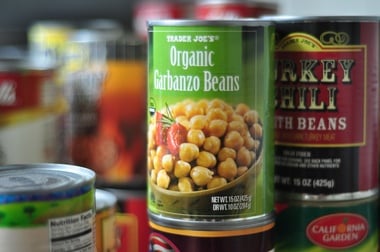Do you feel like you’re continually running on the treadmill, but not going anywhere? Weight loss is a lucrative industry and we are constantly presented with quick fix solutions that we desperately want to believe. According to data by Marketdata Enterprises, Americans spend over $60 billion dollars a year trying to lose weight. Before you empty your wallet to decrease your dress size, are some common mistakes to avoid.
1. You think there’s a quick way to lose weight.
If there were a pill that magically took off the pounds, we’d be living in a world without super-sized chairs in waiting rooms and seat belt extenders. The truth is, weight loss is hard. It takes determination, focus, and commitment to making healthier choices, even though it is often the less convenient or less enjoyable option. Over-the-counter options, such as green tea extract, often come with their own risks and side effects, and most of the options available are likely ineffective for weight loss. In addition, losing more than three pounds a week after a few weeks can increase your chance of developing gallstones, and being on a diet of fewer than 800 calories a day for an extended period of time can lead to serious heart problems.
2. You assume all carbs are bad for you.
Carbohydrates are your body’s main source of energy. In recent years, “low-carb” diets have grown in popularity, but the results are usually short-lived. A 2003 article in the Asia Pacific Journal of Clinical Nutrition found that low-carbohydrate diets have no advantage over traditional well balanced diets and that long-term restriction of carbohydrates can have dangerous side effects, including heart problems, osteoporosis, an increased risk of cancer, impairment of physical activity, lipid abnormalities, and even sudden death, if continued over a prolonged period of time. Eating complex carbohydrates, such as high fiber cereal and brown rice can actually help you lose weight by making you feel fuller while consuming fewer calories.
3. You think “low-fat” or “fat-free” means fewer calories.
Often these options mean just that: less fat. They do not mean fewer calories. To compromise for the missing fat, manufactures will add sugar in order to make the product taste just as good. This chart will show you popular foods where the “low-fat” option has almost as many calories as the regular version. Don’t be fooled by good marketing. Healthy cookies usually taste like “healthy cookies” for a reason.
4. You believe eating healthy costs more money.
While eating healthy may seem more costly, there are a lot of factors to consider. It is cheaper and easier to grab a burger and fries from a local fast food establishment, but investing in your health can save you costly medical bills in the future. In addition, there are more affordable ways to make healthy food. Instead of French fries, chop up a potato, drizzle with a little olive oil, add some salt and pepper and bake. You now have a lower calorie, cheaper option, and lose none of the fiber that a baked potato provides. Furthermore, a lot of people believe that raw vegetables provide more nutrients than frozen or canned ones. This is also not true and frozen or canned vegetables are often cheaper than fresh produce.
5. You skip meals.
You may think that one less meal equates to fewer calories consumed, but skipping meals may just make you eat larger portions later in the day. Research has shown that people who eat breakfast weigh less than those who skip the first meal of the day.
6. You disregard the calories that come from liquids.
According to a recent study, 21 percent of calories in an American diet come from liquids. Consider the following 16 ounce drinks—a Starbucks Hot Chocolate is 370 calories, a 16 ounce Dunkin’ Donuts Vanilla Bean Coolatta is 630 calories, and Jamba Juice Aloha Pineapple Smoothie is 290 calories. Even orange juice is 190 calories for 12 ounces. By swapping these beverages for water, you significantly reduce caloric intake.
7. You don’t count the little things.
The little things include “add-ons” such as salad dressings, coffee creamer, guacamole, and croutons. Just 2 tablespoons of Wishbone Chunky Blue Cheese has 160 calories and 17 grams of fat. Similarly, two tablespoons of Girard’s regular Caesar dressing has 150 calories and 15 grams of fat. Two tablespoons is small enough to be hiding under your sandwich bun or rolled up in your turkey wrap. Being aware of the ingredients in your food can help eliminate these hidden sources of calories and saturated fat. You can view other healthy alternatives here.
The formula for weight loss is simple: the amount of calories burned has to be greater than the amount of calories consumed. Benefits of maintaining a healthy weight include: increased energy, higher self esteem, and a lower risk of heart disease, high blood pressure, diabetes, gallbladder disease, sleep apnea, and certain cancers. The best way to accomplish your weight loss goals is by old fashioned diet and exercise. Eat well balanced meals, increase your physical activity, ignore the late night infomercials, and talk to your doctor or nutritionist about creating a plan of action that best meets your needs.
Featured photo credit: Ed Yourdon via flickr.com













































